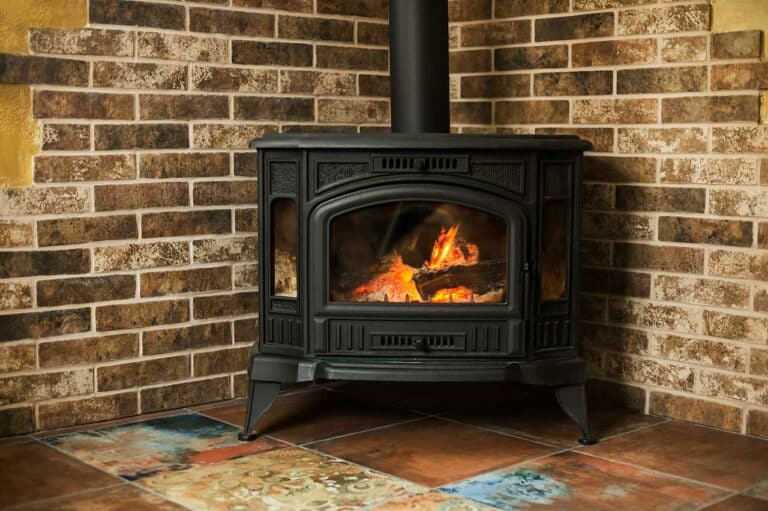Will A Gas Fireplace Work Without Electricity? (What To Know)
Will a gas fireplace work without electricity? That’s a question many people ask, especially when preparing for emergencies like power outages. Whether you’re contemplating adding a gas fireplace to your living space or curious about how your existing one will fare during a blackout, this guide will shed some light on the matter.
How Gas Fireplaces Operate
A gas fireplace operates with a combination of different components that work together to safely produce heat. Understanding these components can help you know how your gas fireplace will function when there’s no electricity.
Pilot Lights
The pilot light is a small flame that serves as the ignition source for the gas fireplace. It comes in two main types: standing pilot lights and intermittent pilot ignition systems.
Standing Pilot Lights
A standing pilot light in a gas fireplace is always lit, ensuring your fireplace is ready to go whenever you need it. It’s a reliable, continuous source of ignition, but it does consume a bit more gas since it’s always on.
Intermittent Pilot Ignition System
An intermittent pilot ignition system only lights up when the fireplace is in use. This helps conserve gas, and it’s considered more energy-efficient.
Regardless of the type, the pilot light keeps the gas valve open, allowing the flow of gas to the burners. Without a pilot light, this safety feature would shut off the gas flow to prevent gas build-up in your home.
Millivolt System
In gas fireplaces with standing pilot lights, the millivolt system plays an essential role. This system acts as a small electrical generator, drawing power from the heat produced by the continuously burning pilot light. By doing so, it controls the gas valve, ensures a steady flow of gas, and initiates the flame. The self-sufficient nature of the millivolt system, generating its own power, enables such fireplaces to operate independently of external electricity.
Intermittent Pilot Ignition Systems in Gas Fireplaces
Moving on to Intermittent Pilot Ignition (IPI) systems. These fireplaces are a bit different. Instead of a constant pilot light, they rely on an electronic igniter to light the pilot when you flip a switch or use a remote. So, while they’re more energy-efficient (no burning gas 24/7), they DO require electricity for their igniter to work. Bummer, right?
But there is a little bit of hope. Some IPI fireplaces have battery backup systems that allow them to ignite even when there’s no electricity. This is a feature you will definitely want in your IPI fireplace if you are making it part of your power outage prep.
The Role and Limitations of Electric Blowers or Fans in Gas Fireplaces
A gas fireplace, while primarily designed to generate heat, often comes with additional features to enhance its efficiency and the comfort it provides. One such feature is the electric blower or fan.
The function of an electric blower or fan is to distribute the heat generated by the fireplace more evenly throughout the room or living space. Without the blower, heat from the fireplace will primarily rise upwards, leaving the areas further away cooler. By circulating the warm air, blowers ensure an entire room heats up more quickly and uniformly.
While the core heating function of some gas fireplaces, especially those with millivolt systems, can operate without external electricity, the blower or fan cannot. It’s wholly reliant on an external power source. This means that during a power outage, even if your fireplace is radiating heat, it won’t distribute that warmth as effectively throughout the room.
The absence of a functioning blower during a blackout might result in certain areas of a room feeling much cooler than others. The area directly around the fireplace will be warmest, with the heat gradually diminishing as you move further away. This limits the gas fireplace’s utility during a power outage.
In the Warm Glow of Knowledge
A gas fireplace, with its cozy ambiance and dependable warmth, stands as a beacon of comfort in many homes. But understanding its underlying mechanics and dependencies is crucial, especially in a world where power outages, albeit inconvenient, are a reality.
The most reassuring takeaway is that many gas fireplaces, especially those with millivolt systems and standing pilot lights, can indeed be a reliable source of heat when electricity goes out. But, like all things, it comes with nuances. Features like electric blowers or fans, which amplify the fireplace’s heat distribution, require external power, which means fireplaces will still work, but will be less effective when an outage comes.
Still, as far backup heating sources for power outages go, gas fireplaces are a good option. And one that many homeowners will get plenty of use from even when the power stays on.




